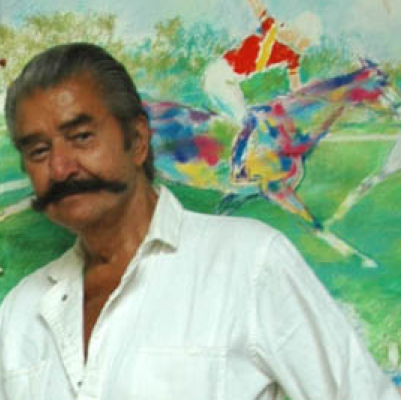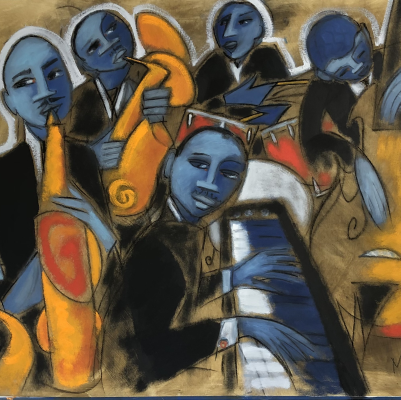Feathers
Mocking bird has heard
Too much Coltrane
High in our walnut tree
The fervor is there
Chromatic escapades
Bird honks
Direct pronouncements
So loud; a masterful annoyance
An edgeless song
At the Blackhawk
Sitting across the table
From George Shearing
How lucky!
Listening to John Lewis, the MJQ
The rope of listening
Palpable listening; nothing missed
“Ah, a taste of Tatum, there”
And more; John whittling away
Into new dimensions, angles
Beyond the scope
Of a mere vinyl recording
“Bags”, now; felt constructions
Percy’s austere demeanor
Connie’s chimes and
George’s light hip smile
Through smoke, across the table
Listening
“Why are your tastes so black?”
We were listening to Jimmy Yancey
Rolling bass, and the tap dancer’s
Staccato asides, worker’s hands
The successful boy asked again
“Why are your tastes so black?”.
He was bothered, out of his depth
Used to choosing not digging
Castles won’t topple, stocks will
Remain steady, the academy is secure
How could I tell him that
Rap on the snare rim, walking bass
I discovered Bessie Smith before
Doris Day
Blues at Sugar Hill
Mama Yancey, no bigger
Than a moment
But the whole town
Came out to hear her
“Pops” Foster, “Big Boy”, Wellman Braud
The frail oracle at the bow
Of the piano
Jersey patterned dress
Like my grandmother wore
Belting out not just any
Song blues, but real blues
Piney woods, train platforms
Anguish and creosote
Damn, make a postage stamp
Of that!
Pony at Jimbo’s Bop City
Pony, un-tethered alto
Breathing, singing
A stream of mind
From the bell of the horn
“I’ve never been this far out before”
Loving the fact that
“Sputnik” and McKibbon
Are on the pier, the ply board stage
“I can hear them back there”
The sea gulls crying accidentals
Living within a bubble of sound
Pushing air out against the
Watching eye, the shuffle of chairs
In the basement club
Extend the line
“Go, Pony—Go Pony”
“They are goading me now
Yeah, from tree to tree
Like Tarzan in tune
No, like Bird (well, not quite)
Like a bird: tree to tree
Port to Port: New Orleans to K.C.”
Further , breathing out
To the sands of the continent’s edge
Skipping over the high point
In waves, estuaries flooded
Piers shake
“Sputnik” is gassed, Big Al laughs
Bass and snair
Ride out chorus; stop
Starfish applause
-For Pony Poindexter, 1926-1988
Minstrel
North Beach evening
Listening to Lonnie Johnson
Through an open door
I didn’t have enough money
To go in
Car noise took away
Many of the notes
Gold lame jacket, single spot
He was playing Leroy Carr
And Gershwin tunes
Rhapsody in continuum
Musician, minstrel
As if to say
“More people should hear this”
Just Diggin’
We were up in the balcony
Old Oakland Auditorium
Listening to Mahalia Jackson
Singing “Dig a Little Deeper in God’s Love”
A room more used to auto shows
And Roller Derby
The upright piano jumping off the floor
Did she say
“…Storehouse of his love”? Yeah!
Round again, shovels in the spotlights
DDig a little deeper…”
Two old sisters just behind us
Sunday silk and big handbags
Said: “Those boys must be here
Just for the music”
Cold Gig
It’s not easy
To turn a TV studio
Into a barrelhouse
Large cameras, boxed eyes
Cables everywhere; concrete floor
Studs Turkel served free beer and pretzels; talk
And we have a few old clips
Of Henry “Red” Allen
Musician’s tux, big chest
Patent leather shoes
Standing on the tips of his toes
Leaning into it
To get some high notes
Or a growl
“Let her rip, wamp, wamp!”

































